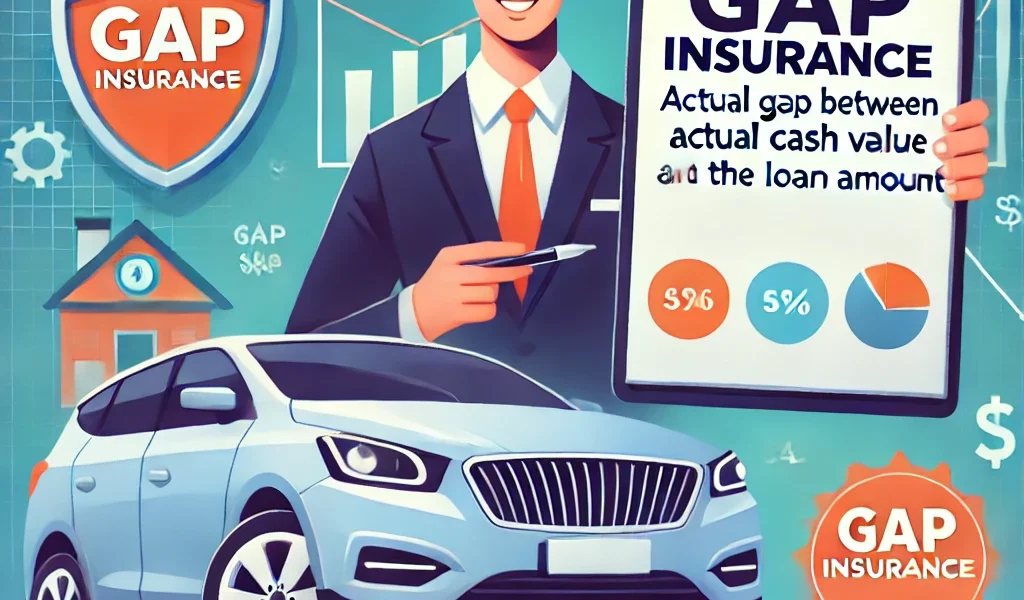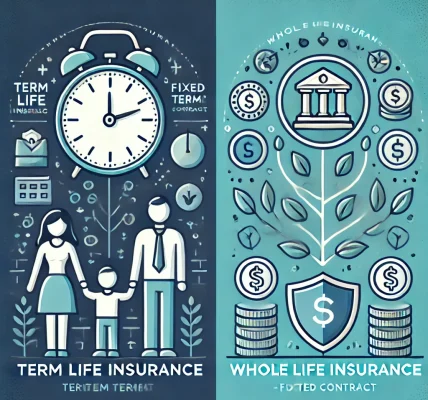When you drive a new car off the lot, its value starts depreciating almost immediately. In the unfortunate event of an accident or theft, your auto insurance might not cover the full amount you owe on your car loan or lease. This is where gap insurance comes into play. Gap insurance protects you from financial loss by covering the difference between your car’s actual cash value (ACV) and the amount you still owe. In this guide, we’ll explain how gap insurance works, its benefits, and whether it’s the right choice for you.
What Is Gap Insurance?
Gap insurance, or Guaranteed Asset Protection, is an optional auto insurance coverage. It is specifically designed for situations where your car is declared a total loss (due to theft or an accident), but the payout from your standard auto insurance is less than the remaining balance on your car loan or lease.
For example:
- You buy a new car for $30,000.
- After a year, the car’s ACV drops to $24,000.
- You still owe $27,000 on your loan.
- If the car is totaled, your standard insurance covers $24,000, leaving you with a $3,000 gap. Gap insurance bridges this difference.
How Does Gap Insurance Work?
- Claims Process: If your car is totaled or stolen, your standard auto insurance pays out the car’s ACV. Gap insurance covers the remaining balance owed on the loan or lease.
- Coverage Limitations:
- Gap insurance only covers the gap between the ACV and your outstanding loan balance.
- It does not cover deductibles, missed payments, or additional costs like extended warranties.
- Policy Availability: Gap insurance can be purchased from:
- Your car dealership (often rolled into the loan or lease).
- Insurance companies as an add-on to your auto insurance policy.
- Third-party providers specializing in gap coverage.
Benefits of Gap Insurance
- Financial Protection: Avoid owing thousands of dollars in the event of a total loss.
- Peace of Mind: Rest easy knowing your loan or lease obligations are covered even if your car’s value depreciates quickly.
- Affordable Premiums: Gap insurance is relatively inexpensive, often costing $20-$40 annually when added to an auto policy.
- Essential for Certain Buyers: Gap insurance is particularly useful if:
- You made a small down payment (less than 20%).
- Your loan term is long (60 months or more).
- Your car’s value depreciates rapidly.
Who Should Consider Gap Insurance?
- New Car Buyers: Depreciation hits hardest in the first few years.
- Leased Vehicle Owners: Most leases require gap insurance.
- High Loan-to-Value Ratio Buyers: If you owe more on your car than it’s worth.
- Buyers of Depreciation-Prone Models: Luxury and electric cars often lose value quickly.
When Might You Not Need Gap Insurance?
- If You Paid Cash: No loan, no gap.
- If You Have a Low Loan-to-Value Ratio: Large down payments or shorter loan terms reduce the need.
- If Your Loan Balance Matches Your Car’s Value: Once your car’s ACV exceeds or equals your loan balance, gap insurance may no longer be necessary.
Tips for Buying Gap Insurance
- Shop Around: Compare rates and terms from your dealer, insurer, and third-party providers.
- Read the Fine Print: Ensure you understand what is and isn’t covered.
- Bundle Policies: Adding gap insurance to an existing auto policy might save you money.
- Monitor Your Loan Balance: Cancel gap insurance once your loan balance aligns with your car’s ACV.
Conclusion
Gap insurance can be a valuable safety net for car owners with loans or leases, offering protection against financial setbacks caused by depreciation. However, it’s not necessary for everyone. Evaluate your financial situation, loan terms, and car value to determine if gap insurance is right for you. By making an informed decision, you can drive with confidence and protect your investment.




